[FIXED] ‘Something went Wrong. Try to reopen Settings later’
You may encounter the Windows 10 update issue if the services essential for the operation of Windows update are not properly configured. Moreover, corrupt Windows installation may also cause the error under discussion.
The user encounters the issue when he launches the Windows update in the system’s Settings but faces the “Something Went Wrong. Try to Reopen Settings Later” message.
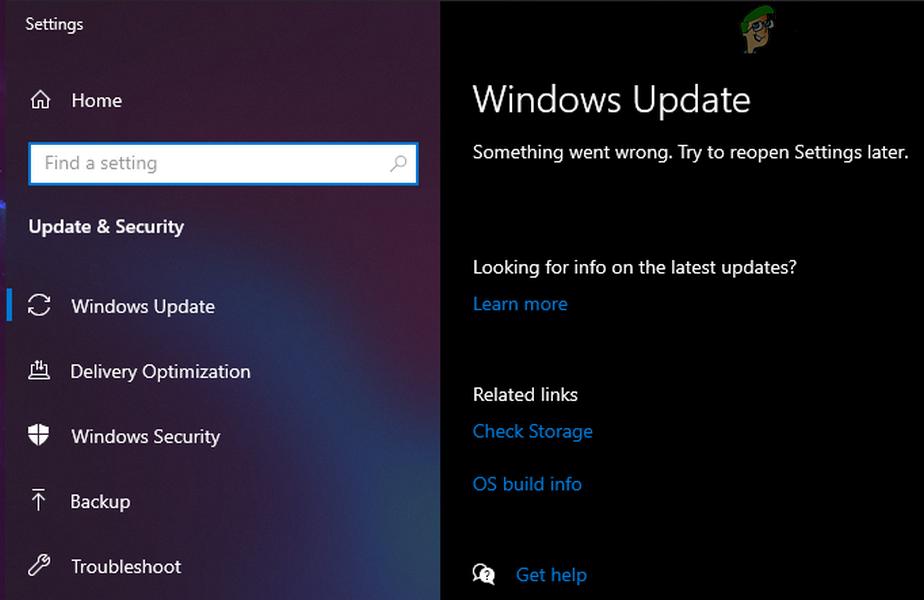
Before moving on with the solutions to fix Windows update, check if clean booting your system solves the issue. Moreover, make sure that no 3rd party utility (e.g. StopUpdates10) to manage Windows update is installed on your system.
Solution 1: Change the Startup Type of UOS Service to Automatic
The Update Orchestrator Service (UOS ) is essential for the proper functioning of the Windows updates. You may encounter the error at hand if the startup type of the said service is not set to automatic as it can create incompatibility between the OS modules. In this scenario, changing the startup type of UOS service to automatic may solve the problem.
- Hit the Windows key and search for Services. Then, in the search result, right-click on Services and choose Run as Administrator.
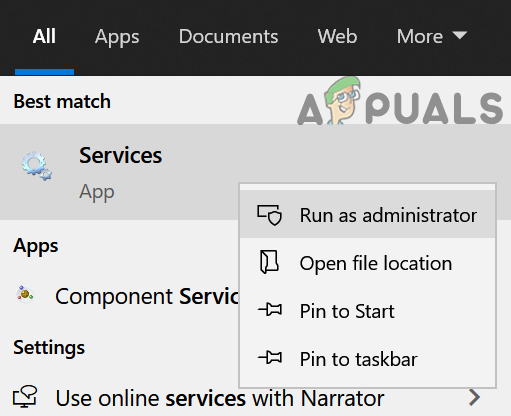
Open Services as Administrator - Now double-click on the Update Orchestrator Service to open its properties.
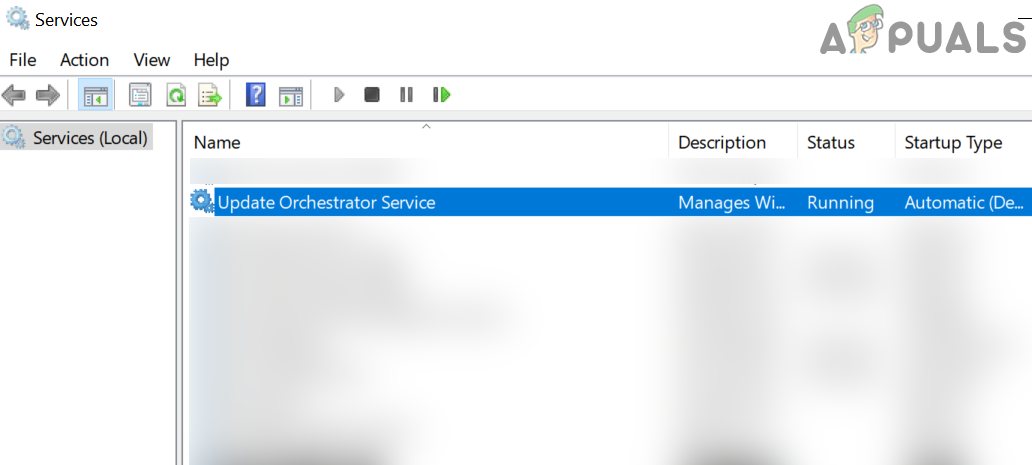
Double Click UOS Service to Open its Properties - Then expand the dropdown box of startup type and select Automatic.

Change the Startup Type of UOS Service to Automatic - Now click on Apply/OK buttons and reboot your PC.
- Upon reboot, check if the Windows 10 update issue is resolved.
- If not, change the startup type of Windows Update service to Automatic and then check if the issue is resolved.
Solution 2: Use the Command Prompt
If the above solution didn’t solve your issue, then using the relevant cmdlets in the elevated Command Prompt to edit the relevant settings/configurations of your system may solve the problem.
- Launch the Windows menu by hitting the Windows key and search for Command Prompt. Then right-click on the result of Command Prompt and select Run as Administrator.

Launch the Elevated Command Prompt - Then execute the following one by one:
Net Stop bits Net Stop wuauserv Net Stop appidsvc Net Stop cryptsvc Ren %systemroot%SoftwareDistribution SoftwareDistribution.bak Ren %systemroot%system32catroot2 catroot2.bak Net Start bits Net Start wuauserv Net Start appidsvc Net Start cryptsvc
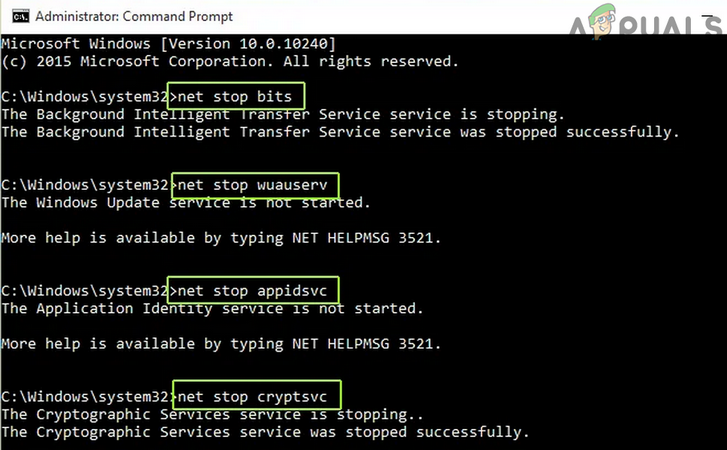
Stop and Start the Services Related to Windows Update - Now reboot your PC and upon reboot, check if the Windows update is working fine.
Solution 3: Use the Registry Editor
The Windows update might not work properly if the relevant registry keys are not configured properly. In this case, editing the relevant registry keys may solve the problem.
Warning: Be very careful as editing the system’s registry requires a certain level of expertise and if not done rightfully, you may cause everlasting damage to the OS, system, or your data.
- Create a backup of your system’s registry.
- Hit the Windows key and in the search bar, search for Registry Editor. Then, in the results pulled by search, right-click on the Registry Editor and select Run as Administrator.
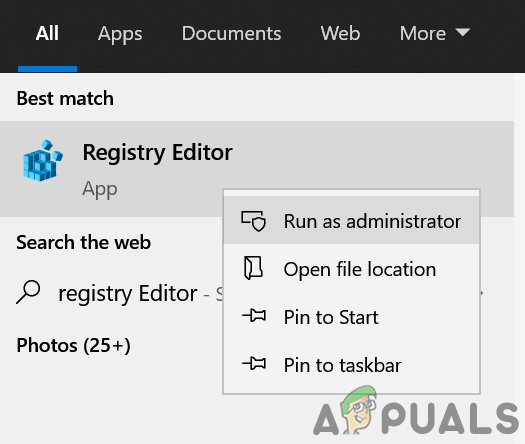
Open Registry Editor as Administrator - Then navigate to the following:
Computer\HKEY_LOCAL_MACHINE\SYSTEM\CurrentControlSet\Services\UsoSvc
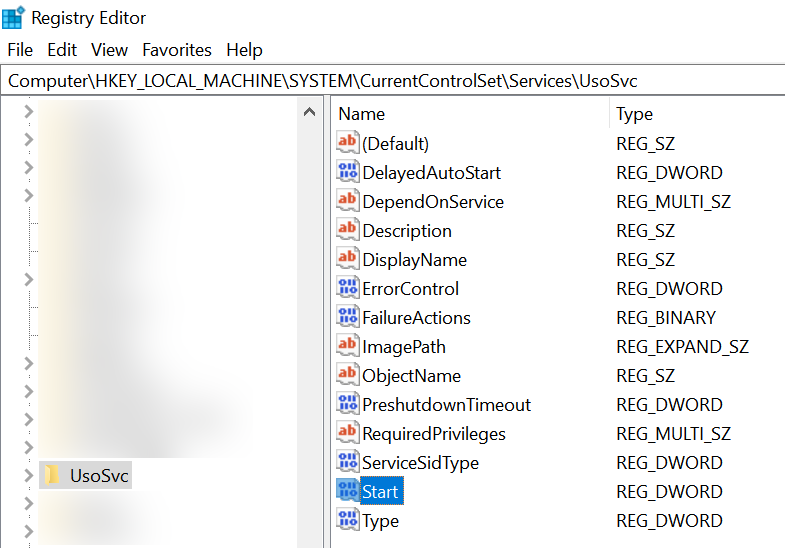
Double Click USO Start Registry Key to Change its Value - Now, in the right pane of the window, double click on Start and change its value to 2.
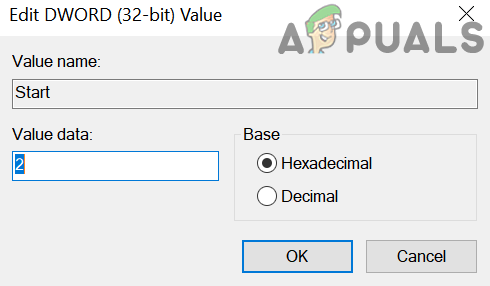
Change USO Start Registry Key Value to 2 - Then exit the Registry Editor of your PC and reboot the PC.
- Upon reboot, check if the Windows update is operating fine.
- If not, check if restoring the Windows Update registry values to the defaults solves the issue (you may use the key from another working but secure PC).
Computer\HKEY_LOCAL_MACHINE\SYSTEM\CurrentControlSet\Services\wuauserv
Solution 4: Create a New User Account
The Windows updates may not work properly if your system’s user profile is corrupt. In this context, creating a new user profile, and then updating the system may solve the problem.
- Create a new local user profile on your system (make sure the account is of administrator nature) and power off your PC.
- Now power on your system and log in to it by using the newly created profile to check if the updates issue is resolved.
Solution 5: Perform an SFC Scan
The Windows update might not function properly if the files essential for its operation are corrupt. In this context, performing an SFC scan (which may find and repair the corrupt OS files) may solve the problem.
- Perform an SFC scan of your system (you may have to use the safe mode of your system). This scan may take some time to complete, so, perform it when you can spare your system for plenty of time.
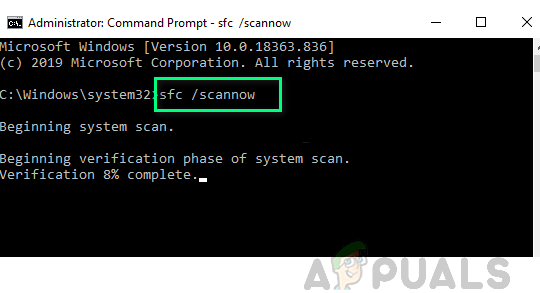
Perform an SFC Scan - Now check if Windows updates are functioning properly.
Solution 6: Perform an In-Place Upgrade of Your System
If none of the solutions has worked for you, then performing an in-place upgrade of the Windows of your system may solve the problem.
- Launch a web browser and download the Media Creation Tool of Microsoft.
- Then launch the downloaded file with administrator privileges and select Upgrade this PC Now.

Select Upgrade This PC Now - Now select the option of Keep Windows Settings, Personal Files, and Apps and wait for the completion of the upgrade process.
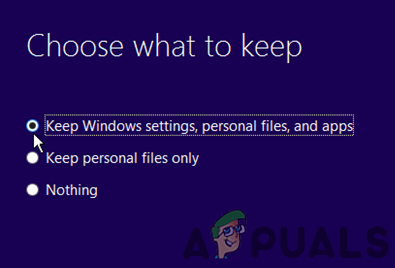
Select the Option of Keep Windows Settings, Personal Files, and Apps - After completion of the upgrade, check if the update issue is resolved.
- If not, then perform a repair install of the Windows of your system, and hopefully, the Windows 10 update issue is resolved.
If the issue is still there, then either use a 3rd party utility to manage Windows update (e.g. StopUpdates10) or perform a clean installation of Windows.




